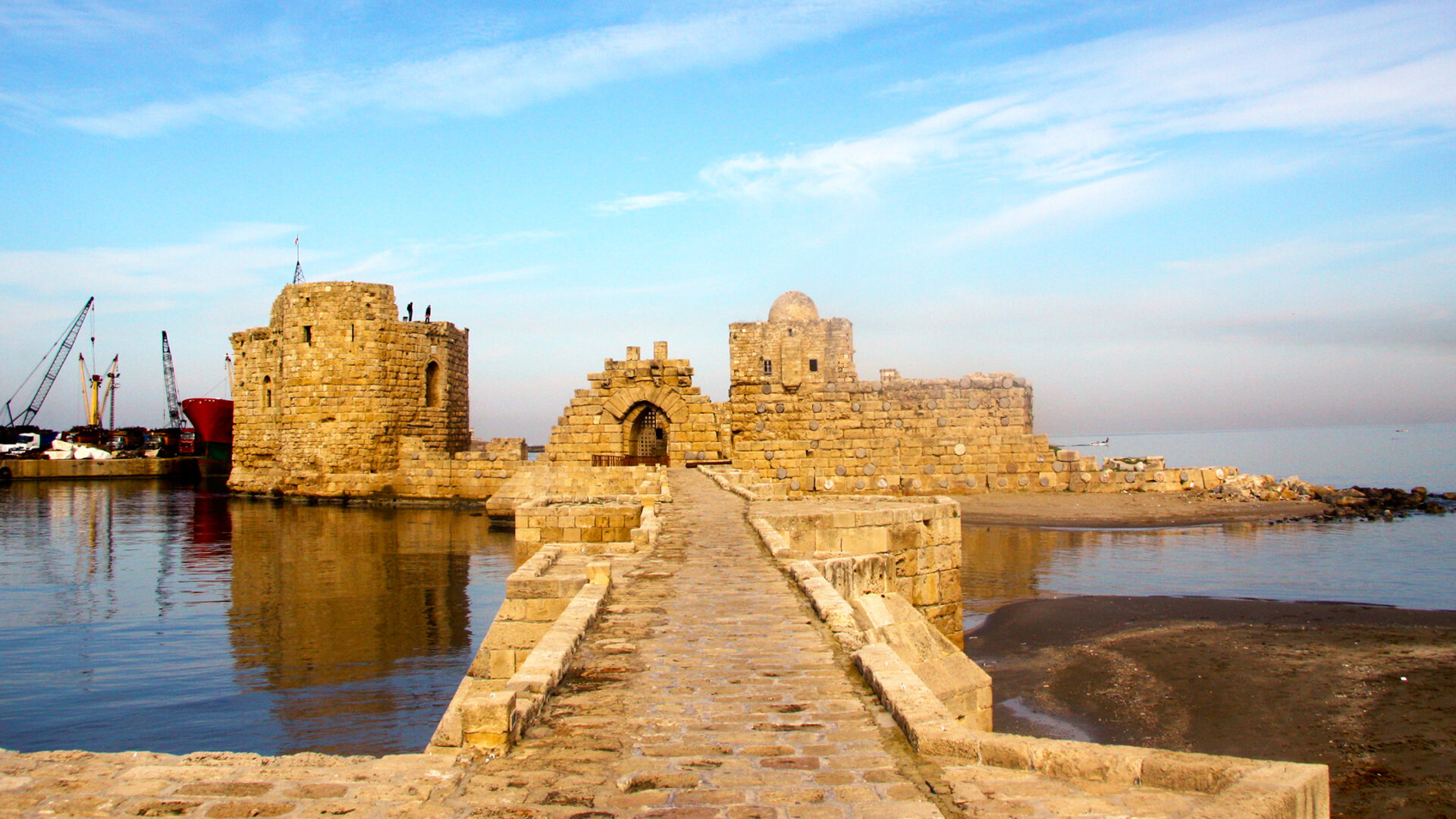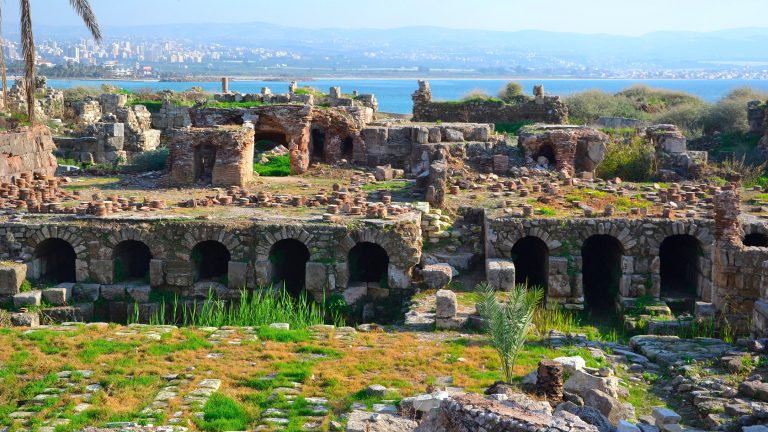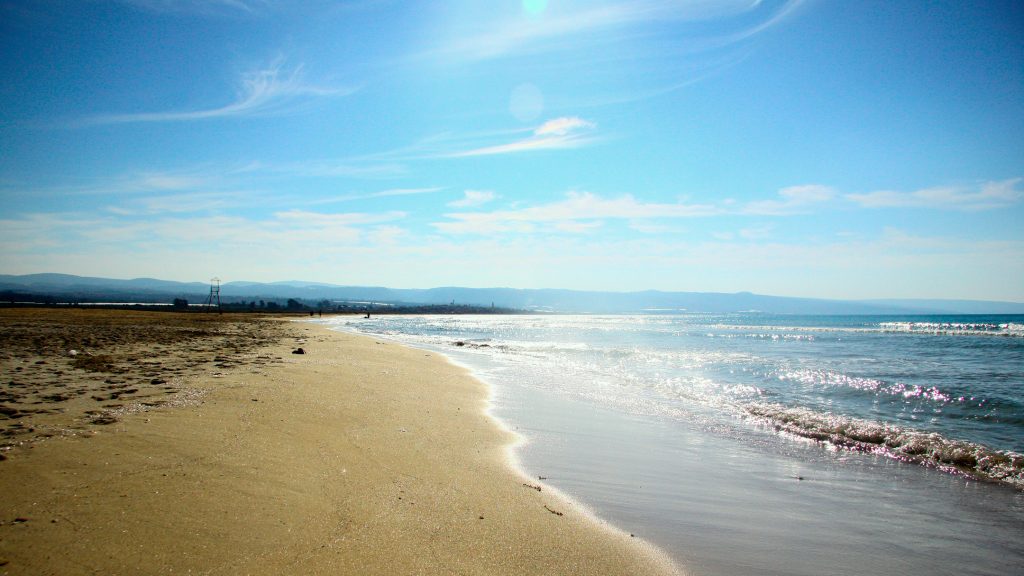The earliest recorded settlers of the land today called Lebanon were the Phoenicians, named so by the Greeks by virtue of the purple dye they extracted from Murex shells and sold across the Mediterranean. Organized in independent city-states, and spread along the Eastern Mediterranean coast, Phoenician civilization thrived between 1500 B.C. and 300 B.C., leaving behind the foundations of the great coastal cities of modern day Lebanon.
Although there remain almost no physical traces of this great civilization, the cities in which it thrived have survived to our times, and transformed through the ages from important trade centers to dense urban metropoles, bearing witness to the rich history that has shaped them.

Eshmoun and Saida
The trip begins by traveling south of Beirut towards Saida, or Sidon, one of the two most important city-states of the Phoenicians and their original seaport.
Just outside the entrance of modern Saida, close to the Awali river, lies one of the only remaining Phoenician sites in Lebanon, the temple of Eshmoun. Set in the expanse of lemon and orange orchards that border the city, the archeological site was discovered in 1900, and excavated from 1963 by French archeologist Maurice Dunand. Along with worship structures and water-related elements dedicated to the titular god of Sidon, Eshmoun, the Phoenician god of healing, the temple complex contained adjacent areas dedicated to goddess Astarte (Ashtart). Where some of the large parts of the temple are still visible on site, many artefacts, statues and smaller structures have been moved or looted, and some are today displayed in the National Museum in Beirut, and the Louvre in Paris. There also remain within the Eshmoun complex traces of later interventions, notably vestiges of a Roman villa, a colonnade and mosaics.

After the Castle visit, and perhaps some fresh fish for lunch, it is worth wandering inside the maze of the old souks, which contain a number of historic structures of various periods.
It is believed that another Phoenician temple, dedicated to the god Melkart, stood on the island that today holds the remains of Sidon’s Sea Castle. Driving south along the coastal road, the Sea Castle appears on the right, facing the entrance to Saida’s old souks. The Castle, initially built by the Crusaders in 1228, was destroyed and rebuilt multiple times by the Mamluks and later by Fakhreddine II in the 17th century. Beneath the island, buried vestiges, columns, walls and artefacts attest to the use of the island in Phoenician times. Inland, other important parts of ancient Sidon have been obliterated, ravaged by the modern city and construction, including the ancient Necropolis of Sidon, in which the important Alexander Sarcophagus was found (and today constitutes Istanbul’s Archeological Museum’s most prized possession), the St. Louis Castle (built by the Crusaders on a Fatimid ruin) and Murex Hill (the Phoenician mound of discarded Murex shells from which the legendary purple dye was extracted).
Most notably, the soap museum, a restoration of a series of older soap manufacturing structures dating back to the 13th century, the Khan el Franj, built in the 17th century by Fakhreddine II, and one of the few remaining caravanserais in Lebanon, and the Debanne House Museum, a unique example of 18th century Ottoman architecture, all attest to Saida’s important past and enduring history. From the top of the Debanne palace, the view of Saida’s old city unfolds, revealing its Arab courtyard organization, and the expanse of the contemporary city beyond. You can also observe the Grand Omari Mosque, a 13th century example of Mamluk religious architecture, built on the remains of another Crusader fortress.

